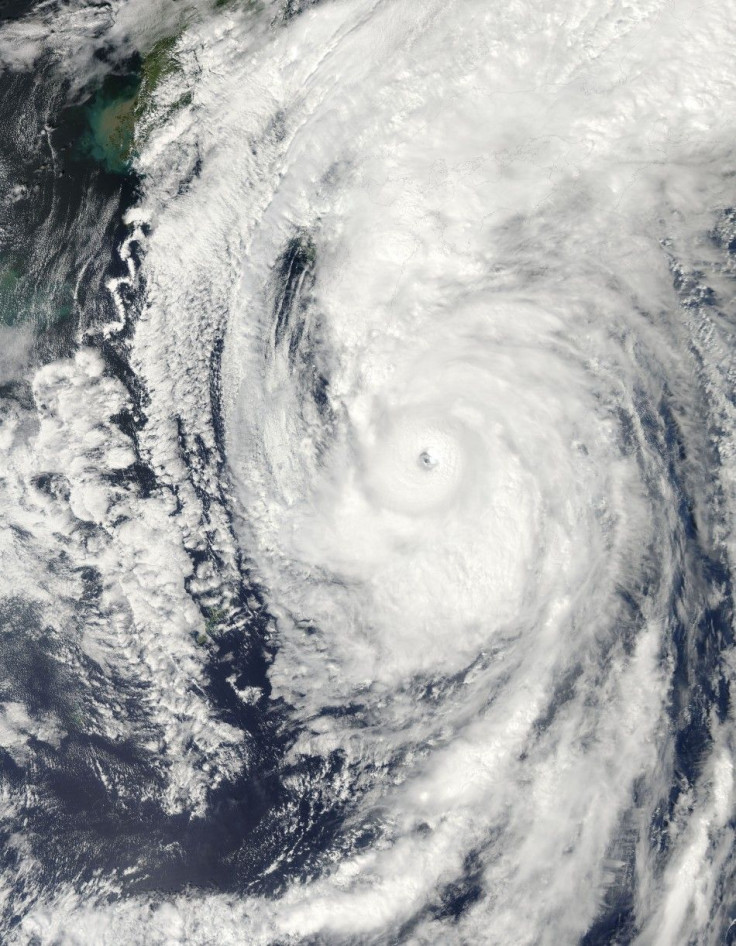Typhoons, Cyclones and Hurricanes: What's the Difference?

Typhoon Roke is currently pounding central Japan, causing massive blackouts, flooding and at least three deaths. Roke is the second typhoon to hit Japan this month, coming only three weeks after Typhoon Talas struck the west side of the island nation, killing more than 60 people.
These types of large storms are seasonal, running almost exclusively between the spring and the new year. So far, there have been a number of major storms across the world, including Hurricane Irene, which slammed the Caribbean and traveled up the East Coast of the United States.
So what exactly is the difference between a typhoon, a cyclone and a hurricane?
Technically, all three are categorized under the umbrella-term Tropical Cyclone. But just as a square is a rectangle, but a rectangle is not a square -- the distinction between these three types of storms vary in the details. The difference lies not in any meteorological difference, but in the geographical difference. (Contrary to popular belief, the designation has nothing to do with a storm's rotation. Clockwise or counter-clockwise, it doesn't matter.)
On the simplest level, a hurricane is a tropical cyclone that occurs east of the International Date Line (toward the Atlantic), and a typhoon is a storm that happens on the other side of the Date Line in the west Pacific.
This name-discrepancy is largely a product of culture. The Japanese word to describe such massive storms is taifu, and there are similar sounding words in Chinese, Hindi and Arabic. Similarly, the word hurricane relates both to a Mayan god, Huracan, and the Taino Indian god Juracán.
But, there are actually seven distinct regions, each with its own tropical cyclone classification terms. The North Indian Ocean, South West Indian Ocean and Australia regions all use various forms of cyclone, the most severe storms called Super Cyclonic Storm, Very Intense Tropical Cyclones and Severe Tropical Cyclones, respectively.
In two of the Pacific regions, storms are classified as typhoons, however one storm-tracking agency employs Super Typhoon, while the other doesn't. Again, anything originating in the Atlantic Ocean is a hurricane.
Making matters more complicated, there are more-minor tropical cyclones have different distinctions as well, and tropical storms, tropical depressions and cyclonic storms are all less-severe forms of the same thing.
All of this has been made official by Disaster Controlled Vocabulary set up by various networks, such as the Caribbean Disaster Information Network.
The severity of a tropical cyclone is labeled according to the Saffir-Simpson Scale, which grades according to wind speed and storm surge. Surge is the essentially the height of a wave, or the measured rise of water due to the storm. The Saffir-Simpson system does not take into account the physical size of a storm, nor the amount of precipitation.
The tropical cyclone scale ranges -- low to high -- from category one to category five. Anything lower than category one, which begins at 74 miles per hour winds and a 4-foot surge, isn't considered either a hurricane or a typhoon. Each category rises incrementally in both qualifiers, until it reaches category five, which is designated by winds of over 156 miles per hour and ocean swells above 18 feet.
Despite the fact that hurricanes and typhoons are technically the same thing, typhoons, historically, can be much more powerful than hurricanes. The strongest hurricane ever was Hurricane Wilma in 2005 (during the season that included Hurricane Katrina) with winds reaching 185 miles per hour.
The strongest typhoon ever was Typhoon Tip in 1979, during which winds topped out at over 300 miles per hour. This again is related to geography: the Pacific Ocean is simply larger than the Atlantic, giving the storm more time and room and to grow in intensity.
Typhoon Roke in Japan is currently a category two storm, which winds peaking slightly under 100 miles per hour. As it travels over land, frighteningly moving toward the Fukushima disaster zone, it is expected to ease to a category one.
But don't let the downgrade fool you. Typhoon Roke will still be a deadly, severe storm, and likely not the final one to hit the country this year.
© Copyright IBTimes 2024. All rights reserved.





















